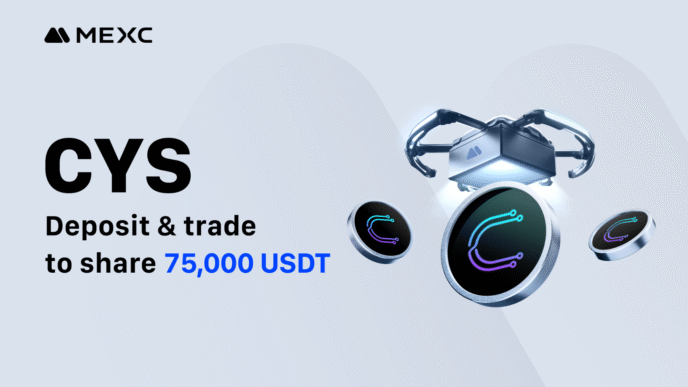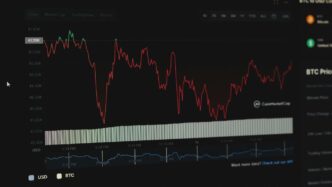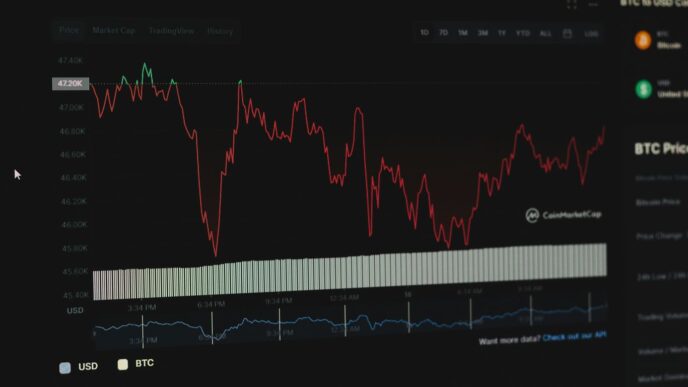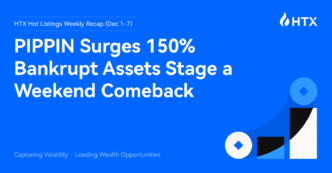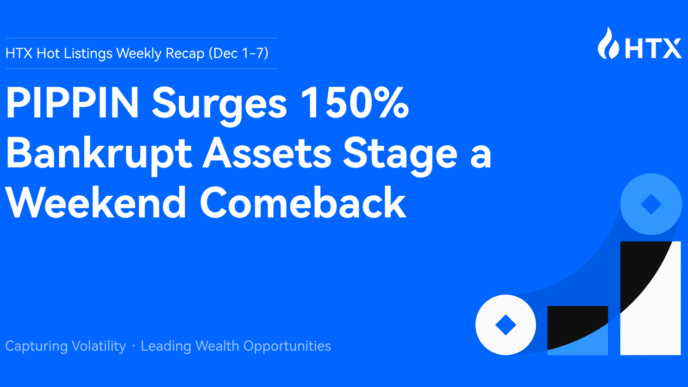Every year, the Gartner Hype Cycle points out which technologies are getting attention and which ones might actually stick around. The gartner hype cycle 2025 is shaping up to be a big deal, especially with all the buzz around AI, security, and new ways of running businesses. It’s not just about what’s cool right now, but what could actually change how companies work in the next few years. If you’re trying to keep up, it can be tough to tell what’s hype and what’s real progress. Let’s break down what’s going on this year and what you should keep an eye on.
Key Takeaways
- The gartner hype cycle 2025 highlights technologies that could really change how businesses operate, not just the flashy stuff.
- AI is moving from experiments to real use across many industries, but leaders need to watch out for overpromising results.
- Security is a growing concern, with new tools like confidential computing and digital immune systems getting more attention.
- Energy-saving tech and hybrid computing are becoming more important as companies look for ways to be more efficient and green.
- Business leaders are being urged to focus on tech that matches their actual goals, not just chase the latest trend.
Core Themes Shaping the Gartner Hype Cycle 2025
The 2025 Gartner Hype Cycle maps out big changes hitting technology and society right now. Every year Gartner picks important technology trends, but this year’s themes hit much closer to daily business life. Let’s break down what’s catching everyone’s eye for 2025 and why these shifts have people talking both at boardrooms and busy coffee shops.
The Rise of Autonomous Business
Companies have always looked for ways to run smoother, spend less time on manual tasks, and make faster decisions. In 2025, autonomous systems are moving from wild ideas to almost ordinary reality across industries—think automated supply chains, self-monitoring networks, and AI-led business processes.
Some important qualities about this trend:
- Businesses are adopting smart automation platforms to handle repetitive and critical processes.
- Decision-making is shifting from people-only to hybrid teams of humans and AI agents.
- Maintenance and monitoring work is quietly starting to run itself, with systems flagging only the most important issues for staff.
Augmented Humanity and Technology Integration
What’s it like when digital tools begin to blend into human lives without us really noticing? Wearable devices, no-touch interfaces, and smart assistants aren’t science fiction anymore—people rely on them every day. For example, emerging innovations such as driverless cars powered by AI and robots with advanced interaction skills are already changing how things work and how safe we feel in public and at home, as shown in human-like robots with recognition features.
Three main things to watch:
- Growing use of devices that track, guide, or support people’s actions without being invasive.
- Expanded trust in digital health monitors and mobility aids.
- Workplaces where technology and people are hard to tell apart—think virtual meetings that feel face-to-face and physical tasks with digital help.
Hypermachinity and Automation
Automation’s been around for ages, but now it’s everywhere: not just on factory floors, but in offices, design studios, and even customer interactions. The difference in 2025 is how much these smart machines handle work that used to need human thought.
In short:
- Jobs are getting reimagined; some are shrinking, others are morphing into more creative or oversight roles.
- Software robots and process bots act like tireless coworkers.
- People are getting trained to work with automation tools, not against them.
Here’s a quick table to show where automation is making the biggest impact:
| Area | Old Process | 2025 Trend |
|---|---|---|
| IT Operations | Manual monitoring | Automated incident response |
| HR & Payroll | Data entry | Smart workflow bots |
| Customer Service | Scripted replies | Adaptive AI assistants |
Techno-Societal Fragility Challenges
Not everything is perfect though. As high-tech systems run more of daily life, cracks are showing. Technology is supposed to support stability, but digital attacks, misinformation, and sudden shocks can cause real problems. Leaders are being forced to rethink security, privacy, and system reliability.
Areas of concern:
- Geopolitical issues and new kinds of cyberattacks are rising.
- Regular technology is sometimes not enough to stop misinformation and complex hacks.
- People and organizations have to stay adaptable and plan for digital surprises more than ever.
2025 is shaping up to be a year where the line between tech and human decision gets blurry—and everyone needs backup plans in case the shiny new system stumbles.
AI Innovations Dominating the Gartner Hype Cycle 2025
AI is center stage again in the 2025 Hype Cycle, but there’s a twist: now, it’s not just about having AI—it’s about using it for real business results. Organizations are jumping past experiments and looking at ways to make these tools work across their companies. Here’s what’s at the top of the list right now.
Scaling Generative AI Across Industries
Generative AI is moving from flashy demos to meaningful work in real businesses. As companies look beyond chatbots and image tools, they’re finding ways to use generative models for things like automating customer service responses, speeding up product design, and writing code.
Industries seeing the fastest adoption:
- Healthcare: Drug discovery and record summarization
- Finance: Fraud detection, compliance reports
- Retail: Personalized marketing, customer support
| Industry | Use Case Example | Market Adoption (2025) |
|---|---|---|
| Healthcare | Drug modeling, diagnostics | 47% |
| Finance | Conversational banking apps | 54% |
| Retail | Automated product descriptions | 39% |
None of these fields are just experimenting anymore—they’re putting generative AI to real work. If you want to see what blurring boundaries in tech look like, consider recent advances in space travel technology, where AI helps manage huge flows of data in real time.
Advancements in AI Governance Platforms
AI isn’t just about algorithms. There’s more talk than ever about keeping these tools in check.
Here’s what organizations are doing:
- Using dedicated AI governance software to track data sources, model behavior, and decisions.
- Automating alerts for bias, inaccuracies, and weird behaviors.
- Setting up regular audits to keep up with regulations (which change a lot).
Having governance in place helps
- Lower risk of compliance issues
- Build trust with clients and users
- Keep up with global AI laws that are changing fast
Agentic AI and Its Strategic Impact
Agentic AI systems act on their own to get to a user’s goal. These aren’t simple chatbots—they make decisions, plan, and try out different ways to solve problems. This trend is new but growing.
What’s different about Agentic AI?
- It can take tasks from start to finish (like completing a purchase or planning a logistics route)
- It learns from feedback without asking a human every time
- It’s already being tested for things like supply chain management and financial trading
Businesses that deploy agentic AI can rethink entire workflows, cutting manual steps and speeding up outcomes.
To wrap up, AI in 2025 isn’t about the novelty anymore. It’s about scaling, oversight, and smart autonomy. Companies are trying to cut through the noise, find what works, and put the right guardrails in place so AI grows up—without the drama.
Security and Resilience in an Evolving Digital Landscape
The digital world never feels stable these days, does it? Just when you sort out one problem, several more pop up, from new ransomware to odd privacy scandals. Companies are under constant pressure to keep systems running and data safe, even though threats keep changing shape. Here’s what’s catching attention in 2025 and what folks are actually doing about it.
Confidential Computing for Data Protection
Confidential computing is an approach where data is protected not just at rest or while moving, but also while it’s being processed. This isn’t some futuristic concept anymore—it’s what businesses are starting to expect. Why? Because cyberattacks keep targeting the exact window where traditional protections fall short: during computation.
Key elements driving adoption:
- Sensitive workloads like financial transactions, patient data, and trade secrets must stay private even in the cloud
- Hardware-level protection (like trusted execution environments) is becoming more common in standard servers
- Regulations are pushing for higher privacy standards internationally
Challenges still show up, like slower performance or the need for new coding practices. But as more vendors jump in, early adopters say it’s making a real difference in everyday operations, especially for keeping up with growing compliance demands.
Building Digital Immune Systems
This isn’t about biology, but it’s inspired by the body’s defense mechanisms. A digital immune system uses layers of automated monitoring, threat identification, and self-healing to keep critical applications online—even under attack. It’s not enough to just react; systems have to bounce back fast, sometimes without human help.
Basic features in today’s digital immune models:
- Real-time threat analytics that fix or contain issues immediately
- Automated failover and rollback options for outages
- Predictive risk scoring based on unusual behavior patterns
- Continuous testing to keep defenses sharp
It’s smart to look at what matters most to your business before rolling out these tools—chasing every security buzzword rarely pays off. If you want more ideas on specific cybersecurity projects to tackle in 2025, checking out cybersecurity projects for Security and Risk Management leaders can help prioritize what’s actually working right now.
Crypto-Agility and Disinformation Security
Crypto-agility is a simple idea: be able to swap out encryption methods quickly if one gets broken. With quantum computing looking less theoretical by the day, companies are finally seeing why rigid, old encryption is a risk. The process of updating cryptographic tools isn’t fun—it usually means a lot of testing, changing software, and hoping nothing breaks—but it’s something organizations can’t afford to avoid.
At the same time, disinformation security is picking up steam. Fake content—from deepfakes to fake press releases—can ruin trust fast. Technology leaders are:
- Using continuous authentication to check if users and data sources are who they claim to be
- Setting up monitoring for brand mentions and suspicious patterns across social media
- Investing in tools that help spot fraud and clone attacks in real time
Here’s a simple table summarizing why these trends matter:
| Trend | What It Solves | Major Barrier |
|---|---|---|
| Confidential Computing | Data leaks in processing | Technical overhead |
| Digital Immune Systems | Fast response to live attacks | Integration effort |
| Crypto-Agility | Outdated encryption risks | Upgrade complexity |
| Disinformation Security | Fake narratives, reputation issues | Rapid content spread |
Staying resilient doesn’t mean buying every cool tool on the market. It’s about picking what lines up with your biggest threats and being ready to change methods as new risks show up. For most businesses, the hardest part is knowing which problems to handle first—then actually following through, day after day.
Transformative Technologies Leading 2025 Strategic Trends

The tech landscape is spinning faster than ever, with companies scrambling to figure out what really matters and what’s just noise. This year, three technologies stand out as having the potential to shift how we live and work. Let’s get into what they are and why they’re making waves in 2025.
Post-Quantum Cryptography Adoption
Quantum computers are no longer just a sci-fi idea. As they creep closer to reality, old-school encryption starts to look pretty shaky. Post-quantum cryptography (PQC) is what folks in security are turning to. Here’s what’s going on:
- PQC is designed to survive attacks from both classical and quantum computers. That means the old algorithms—stuff like RSA and ECC—are being replaced or updated.
- This isn’t a plug-and-play change; organizations need to inventory all their cryptographic assets and then test new PQC solutions before a full rollout.
- Some places—banks, government, healthcare—are moving fast. A lot are still at the trial or planning stage, but Gartner expects adoption rates to look like this by the end of the year:
| Sector | Actively Testing | Fully Implemented |
|---|---|---|
| Banking | 60% | 15% |
| Healthcare | 35% | 10% |
| Public Sector | 40% | 12% |
| Manufacturing | 25% | 5% |
It’s tricky, but no company wants to be the one caught flat-footed when quantum hits for real.
Spatial Computing’s Expanding Applications
Spatial computing is more than just a fancy way to say “VR headsets.” It’s tech that blends digital stuff right into the physical world. Picture being able to walk through a new building before it even exists, or field workers getting instructions hovering over machines they’re fixing, in real time. Some key points:
- New use cases are popping up fast, especially in industries like design, logistics, and education.
- Consumer interest is there, but enterprise applications are what’s pushing the tech forward—like digital twins and immersive collaboration spaces.
- Challenges include cost (hardware isn’t cheap yet) and training (people have to learn new skills and systems).
A few leading sectors using spatial computing in 2025:
- Construction and Architecture
- Field Services and Maintenance
- Medical Training and Telehealth
- Logistics and Warehouse Management
Energy-Efficient and Hybrid Computing Solutions
Let’s be real: all this new tech eats up a ton of power. The push to cut down energy use isn’t just about saving money—it’s about keeping up with regulations and consumer expectations. Hybrid computing (mixing local data centers and cloud), as well as energy-smart chips, are making it possible to do more with less. Here’s what’s trending:
- Major cloud providers are pushing green data centers powered by solar or other renewables.
- Companies are embracing hybrid models to optimize for cost, speed, and sustainability.
- Hardware is getting smarter, with chips designed for low-power AI and edge tasks.
A few ways businesses are tackling the problem:
- Running workloads where energy is cheapest and greenest
- Prioritizing efficiency when buying or upgrading servers
- Using management tools to watch—and cut—power use in real time
2025 won’t be about picking just one of these trends. It’s about weaving them together, making choices that add up to smarter, future-ready organizations. But like anything with tech, the devil is in the details—and those details will matter more than ever this year.
Implications for Data Centers and IT Infrastructure

There’s a big wave coming for data centers. The need to keep up with all this AI, tighter security, and constant changes in energy rules is changing how companies think about their infrastructure. 2025 is shaping up to be the year where keeping things simple, flexible, and efficient matters more than ever. Let’s break down what’s really changing.
Integrating AI in Data Center Management
AI is not just about making software smarter—it’s transforming the very backbone of data centers. Now, AI-powered systems help monitor everything, fix problems fast, and even predict failures before they hit. The rise of Data Center Infrastructure Management (DCIM) tools, highlighted in key technology trends by Padmasree Warrior, is about:
- Real-time monitoring for power, cooling, and physical security
- Predictive maintenance so you can deal with issues before they cause downtime
- Automated workflows to keep operations running smoothly with less hands-on work
With these tools, companies manage more AI-heavy workloads with less stress and can adapt when business needs suddenly change.
Sustainable and Resource-Positive Infrastructure
Energy use is a big deal. Companies are now expected to keep the lights on while using less energy and cutting down on waste. Microgrids are catching on—they combine traditional and renewable energy sources so centers stay up, even if the grid goes down.
Some big points here include:
- Using hybrid setups (like solar plus regular electricity)
- Reducing energy loss by producing and storing power on-site
- Scaling up or down without burning extra resources you don’t need
Here’s a look at some numbers driving these investments:
| Technology | Market Adoption (2025) | Main Benefit |
|---|---|---|
| DCIM Tools | 20-50% | Better energy use, less downtime |
| Microgrids | 5-20% | Uptime, cleaner power, lower costs |
| Direct-to-Chip Cooling | <10% | High-density, efficient cooling |
Modern Approaches with DCIM and Microgrids
Bringing in tools like DCIM and microgrids is less about spending money on gadgets and more about giving companies control. In 2025, the main focus is on:
- Tracking and managing every part of the infrastructure in one place
- Switching power sources on the fly (renewable, local, grid)
- Making the entire setup ready for bigger workloads without a tech overhaul
This isn’t just for the big players—smaller companies can now work smarter and cut costs, too. AI and automation make complex tasks manageable and let IT focus on what matters.
If you’re thinking about updating your company’s data center, it’s not just about new racks or faster chips. It’s about building in flexibility, managing resources, and being ready for whatever tomorrow’s tech throws at you.
AI Investment Priorities and Roadmap for Business Leaders
When it comes to AI, staying focused on smart investments and dodging empty promises can really set successful business leaders apart. Over the past year, there’s been a shift from chasing flashy, headline-grabbing AI hotshots, to prioritizing systems that actually work and deliver steady value. Let’s get into what matters for making AI count in 2025.
Identifying High-Impact AI Technologies
Figuring out which AI technologies offer the best results can make or break your long-term strategy. The hype cycle offers clues, but the trick is picking tools that fit your company’s real needs and can scale up as you grow. Don’t just go after what everyone else is talking about—sometimes the quieter innovations yield the best returns.
| AI Technology | Typical Impact on Business | Readiness in 2025 |
|---|---|---|
| Generative AI | Content creation, automation | Stabilizing |
| ModelOps | Reliable AI model delivery | Growing adoption |
| AI-ready Data | Better business insights | Still low (43%) |
| AI Agents | Customer service, sales | Rapid progress |
Three smart moves for identifying the right technologies:
- Assess business challenges and match them to specific AI capabilities (not the other way around).
- Check if your data is truly AI-ready; over half of companies say theirs isn’t, which really limits AI’s usefulness.
- Keep an eye on foundational tools like ModelOps and data pipelines, not just end-user AI features.
Find more tech industry updates beyond these trends, like artificial intelligence coverage.
Avoiding Hype Traps and Setting Realistic Expectations
AI is packed with big promises, but not every new thing pays off. Many organizations poured money into generative AI—sometimes millions—but less than a third of CEOs felt those investments paid off. Getting caught up in buzzwords usually means missing the mark later.
What helps avoid these traps?
- Set measurable business goals for your AI projects, not just tech success.
- Start small: pilot projects show quick results and expose poor fits early.
- Step back often to ask whether the tech really solves a business problem, not just a technical one.
Remember, a bit of caution now saves a lot of frustration and wasted resources later.
Aligning AI Strategies with Business Goals
No matter how advanced your AI stack is, if it doesn’t match your business needs, progress stalls fast. AI priorities should grow from your company’s strategy:
- Get top-level leaders on board, so AI initiatives stay focused.
- Balance short-term wins with long-term bets; don’t gamble everything on one moonshot project.
- Revisit your roadmap every quarter, because new tools and business needs are always coming.
AI isn’t something you buy and forget. Instead, it’s a cycle of learning, retooling, and adjusting as the tech—and your company—changes. Bold but realistic planning will move you from experimental AI efforts toward real results, even if it means ignoring the latest trend or two.
Conclusion
So, that’s a wrap on the 2025 Gartner Hype Cycle. Every year, it feels like there’s a new wave of tech buzzwords and big promises, but this report helps cut through the noise. Whether you’re running a business or just curious about what’s next, the Hype Cycle gives you a way to spot which trends might actually matter. Some of these technologies will fizzle out, others will change how we work and live. The main thing is to stay open to new ideas, but also keep a healthy dose of skepticism. No one can predict the future perfectly, but paying attention to these trends can help you make smarter choices. If you want the full scoop, the full Gartner report is worth a look. For now, just remember: not every shiny new thing is going to stick around, but some might just surprise us.
Frequently Asked Questions
What is the Gartner Hype Cycle for 2025?
The Gartner Hype Cycle for 2025 is a report that shows which new technologies are likely to change the world soon. It helps people understand which tech trends are just starting, which are overhyped, and which are becoming useful in real life.
Why is the 2025 Hype Cycle different from other years?
This year’s Hype Cycle is special because it looks at around 2,000 technologies but highlights only the most important ones. It focuses on trends that could really change how businesses and society work.
How does the Hype Cycle help business leaders make decisions?
The Hype Cycle gives leaders a simple way to see which technologies are worth paying attention to. It helps them avoid chasing every new trend and instead focus on tech that can actually help their company.
What are the main problems facing new technology in 2025?
Some big challenges include keeping data safe, making sure technology can handle unexpected problems, and dealing with fake information. There are also worries about how fast things are changing and if people can keep up.
How should companies get ready for the new trends in the Hype Cycle?
Companies should look at which trends match their goals and start learning about them early. They should also be careful not to get caught up in hype and instead focus on what will really make a difference for their business.
What does ‘avoiding hype traps’ mean in the context of the Hype Cycle?
Avoiding hype traps means not getting too excited about new tech just because everyone is talking about it. Instead, companies should wait until a technology proves it can solve real problems before investing a lot of money or time.






